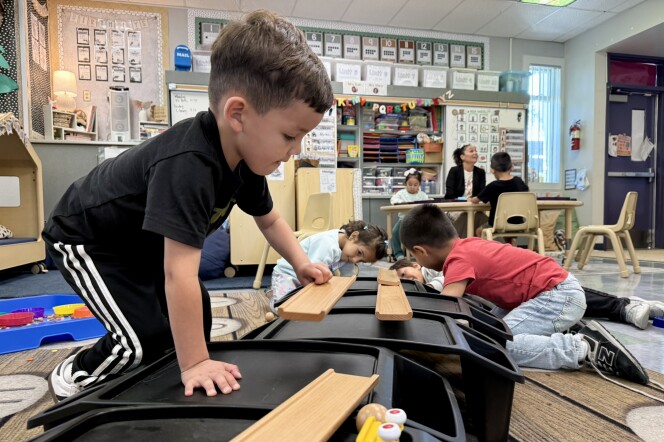With our free press under threat and federal funding for public media gone, your support matters more than ever. Help keep the LAist newsroom strong, become a monthly member or increase your support today.
Read A Book. Escape The Heat. LA Launching Cooling Center Pilot Program At Libraries

Five libraries in some of the hottest L.A. neighborhoods with the most people at risk of heat-related illness will be part of a pilot program to expand “cooling centers."
The background
Pretty much any building that’s open to the public and offers a free spot to rest and cool down is a “cooling center,” but official cooling centers include more than 200 city and county libraries, senior centers, and recreation centers, in addition to more than 50 pools.
Then there are what officials call “augmented” cooling centers, which is when a select few of these facilities extend hours, add staff, offer free water and snacks, and dedicate a specific air-conditioned space for people to ride out extreme heat.
These “augmented” cooling centers are activated when the National Weather Service issues an Excessive Heat Warning.
Which libraries are part of the pilot?
These five libraries will be part of a pilot to better understand how people use "augmented" cooling centers.
- The West Valley Regional Library in Reseda
- Exposition Park - Dr. Mary McLeod Bethune Regional Library
- San Pedro Regional Library
- Pacoima Branch Library
- Chinatown Branch Library
Why these locations?
The city’s Climate Emergency Mobilization Office used city and UCLA data to map heat risk in different communities. The data brings together a variety of risk points including socioeconomic status, pollution burden, access to green space and shade, and numbers of heat-related emergency room visits to identify what areas have the most people at risk for heat-related illness.
Not just about the temperature
The hottest areas aren’t always the highest risk though — for example, when it comes to temperature alone, Chinatown has a “medium risk,” but the Chinatown Library was chosen due to the high number of low or no-income seniors who often have to forgo running their air conditioning so they can afford rent, food and medication. That library is already serving as a place of cool refuge for many of these seniors during times of high heat.
What’s next
Promoting “cooling centers” has been one of the primary public health strategies used by the city amid worsening extreme heat, but not many people actually use them or are aware of them.
The pilot aims to collect data on how many people use these libraries and for how long to better inform the city’s “cooling center” and heat education outreach strategy going forward. The pilot also aims to identify how much additional funding will need to go to libraries to support people during heat waves.
Go deeper
- Cooling Centers Can Protect People From Extreme Heat — If Only LA Can Get People To Use Them (Note: this article was published during a July 2023 heat wave, so the cooling centers listed are not up to date, but the resources linked are).
- How Resilience Hubs Can Help Communities Face The Heat And The Climate Emergency








